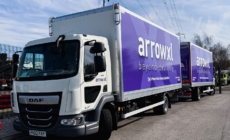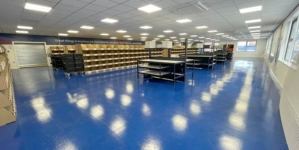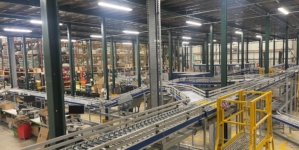-
ROSSLARE EUROPORT TARGETS HEALTH & SAFETY WITH CAMERA TELEMATICS PARTNERSHIP - 2 days ago
-
Landmark Study Reveals Wearable Robotics Significantly Boost Safety and Efficiency in Industrial Environments - July 24, 2024
-
Visku Tackle The Retail Seasonality Challenge One Pallet At A Time - July 22, 2024
-
KAMMAC AND BERGEN LOGISTICS STRENGTHEN FASHION & LIFESTYLE SERVICES IN THE UK - July 19, 2024
-
TENTBOX EXTENDS PARTNERSHIP WITH ARROWXL TO SUPPORT INCREASING DEMAND - July 17, 2024
-
The Perfume Shop improves customer journeys while driving profitability in partnership with Scurri - July 17, 2024
-
ZEROMISSION SECURES £2.3M ($3M) INVESTMENT TO ACCELERATE ELECTRIC FLEETS - July 16, 2024
-
BCMPA CELEBRATES SUCCESS OF 2024 CONFERENCE - July 15, 2024
-
Best of the Best: Jungheinrich Celebrates Triple International Award Win - July 12, 2024
-
GOPLASTICPALLETS.COM CALLS ON NEW CHANCELLOR RACHEL REEVES TO CONSIDER PLASTIC PACKAGING TAX REFORM - July 10, 2024
Business Broadband Jargon Buster
The world of computing and data solutions can be a very confusing place, especially if you’re not totally tech savvy. Here’s a brief guide to just a few of the terms that most commonly cause confusion for those with only limited IT knowledge.
FTTC
FTTC, or ‘Fibre To The Cabinet’, is a broadband Internet telecoms service that uses fibre from the telecom provider’s core network to your nearest distribution point or cabinet – the roadside box from which the fibre is delivered to your premises. FTTC is capable of delivering 76 Mbps download, but speed is impacted by the length of the connection between your premises and the cabinet.
FTTP
FTTP, or ‘Fibre To The Premises’, is a broadband Internet telecoms service that uses fibre from the telecom provider’s core network to the terminating premises. It is a fast growing way of getting affordable fibre to your business. FTTP uses the telecom carrier’s fibre network to transport data long haul, meaning a fibre line connects your local distribution point directly to your business.
VOIP
VoIP stands for voice over Internet protocol, meaning voice calls via a data link. Well-known examples of VoIP include Facetime, Skype and WhatsApp. VoIP can lower cost calls over the Internet, and users won’t be able to tell the difference between a VoIP call and a call over a traditional landline. VoIP also allows you to appear as if you are in the office when you’re not.
Leased Line
A leased line is a fibre data circuit that connects two or more locations for a monthly rental charge. It’s a dedicated service, so your business does not share the bandwidth with other businesses. The bandwidth is symmetric, which means you get the same upload and download speed e.g. 50Mbps upload & 50Mbps download. The service operates over fibre optic lines which means you can get speeds in excess of 10Gbps to support your business demands.
SD WAN
An SD WAN, or ‘software-defined wide area network’, intelligently routes network traffic across the wide area network. This is provided by utilising edge SD WAN routers and an SD WAN controller, which automatically determine the best way to route traffic over the wide area network. One of the main characteristics of the software defined WAN is the ability to manage data traffic over different types of network access such as DSL, Ethernet, Fibre and even 4G.
ABOUT THE AUTHOR
Nathan Hill-Haimes is founder of Amvia, a privately-owned, voice, data and cloud application provider based in Sheffield, UK which supplies services to companies of all sizes. Amvia was founded to bring together some of the most experienced and talented UK telecoms professionals, and now handles billions of data packets a day whilst still making customers its key focus. For more information, please visit www.amvia.co.uk

































